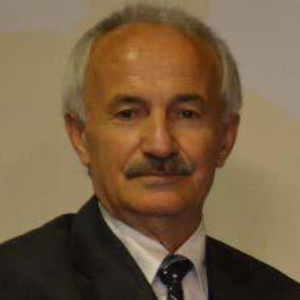Title : Lattice reactions governing reversibility and pseudoelasticity in shape memory alloys
Abstract:
Shape memory alloys take place in a class of adaptive structural materials called smart materials by giving stimulus response to changes in the external conditions. These alloys exhibit a peculiar property called shape memory effect. These alloys are functional materials with these properties and used as shape memory elements in many interdisciplinary fields. This phenomenon is initiated with thermomechanical treatments on cooling and deformation and performed thermally on heating and cooling, with which shape of materials cycles between the original and deformed shapes in reversible way. Therefore, this behavior can be called thermal memory or thermoelasticity. Deformation in low temperature condition is plastic deformation, with which strain energy is stored in the materials and released on heating by recovering the original shape. This phenomenon is governed by the thermomechanical and thermoresponsive reactions, thermal and stress induced martensitic transformations. Thermal induced martensitic transformations occur on cooling with cooperative movement of atoms in <110 > -type directions on a {110} - type plane of austenite matrix, along with lattice twinning and ordered parent phase structures turn into the twinned martensite structures. The twinned structures turn into detwinned martensite structures by means of stress induced martensitic transformations with deformation. These alloys exhibit another property, called pseudoelasticity or superelasticity, which is performed in only mechanical manner with stressing and releasing the material in elasticity limit at a constant temperature in the parent austenite phase region, and shape recovery occurs instantly on releasing by exhibiting elastic material behavior. Superelasticity is performed in non-linear way; loading and releasing paths are different, and cycling loop refers to the energy dissipation. Superelasticity is also result of stress induced martensitic transformation, and the ordered parent phase structures turn into the detwinned martensite structures by stressing. Copper based alloys exhibit this property in metastable beta-phase region. Lattice twinning is not uniform in these alloys and cause the formation of unusual complex layered structures. In the present contribution, x-ray diffraction and transmission electron microscopy (TEM) studies were carried out on copper based CuZnAl and CuAlMn alloys. X-ray diffraction profiles and electron diffraction patterns reveal that both alloys exhibit super lattice reflections inherited from parent phase due to the displacive character of martensitic transformation.
Keywords: Shape memory effect, martensitic transformation, thermoelasticity, pseudoelasticity, twinning, detwinning.
Audience take away:
- Shape memory alloys are sensitive materials to the external conditions, and they are used shape memory elements in many fields from biomedical application to the aeronautical industry. Shape memory effect is an interdisciplinary subject, and in principle, I introduce the basic terms and definitions related to the shape memory, reversibility, and crystallographic transformation at the multidisciplinary conferences, and tell the experimental results.



